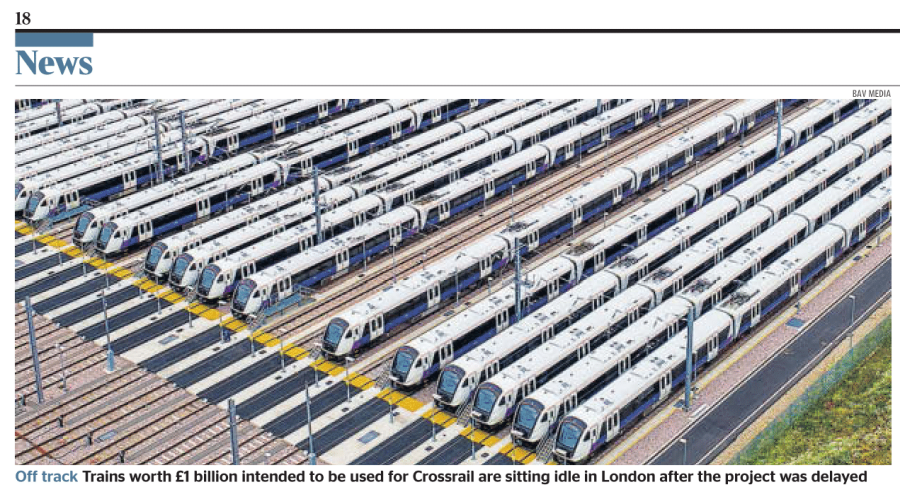The trains are part of a £1 billion fleet commissioned for the flagship rail project, believed to be costing around £17.6 billion. Crossrail bought 70 trains, which each have room for 1,500 passengers, but only 15 of them are currently in use on existing services, while the rest wait for the track to be finished.
The new line will run from Reading, under central London and out to Abbey Wood in south-east London and Shenfield in Essex. It was meant to be opened in December last year but the complete project may not be ready until 2021. Crossrail hopes to have the central section of the Elizabeth line between Paddington and Abbey wood open by 2020, It would link the West End, the City of London, Canary Wharf and southeast London with 12 trains per hour during peak times. Until then most of the new 200-metre Bombardier Class 345 trains have been parked at a depot in Old Oak Common in north-west London, while others are at depots in Essex and Derby.
Mark Wild, Chief Executive, Crossrail Ltd, said in a statement last month: “Crossrail is an immensely complex project and there will be challenges ahead particularly with the testing of the train and signalling systems but the Elizabeth line is going to be incredible for London and really will be worth the wait. This new plan will get us there and allow this fantastic new railway to open around the end of next year.”
Tony Meggs, Chairman, Crossrail Ltd, added: “Everyone involved in the Crossrail project is fully focused on ensuring the Elizabeth line is completed as quickly as possible and brought into service for passengers. At many stations, work is underway to complete the final fit-out and testing of key systems. Each Elizabeth line station has over 50 km of communications cabling, 200 CCTV cameras, 66 information displays, 200 radio antennas, 750 loudspeakers and 50 help points. All this technology needs to be fully installed, tested and integrated. Dynamic testing of the trains in the tunnels is now underway with intensive work to increase the reliability of the train software to enable trains to successfully operate across the three signalling systems on the Elizabeth line. Trains have been operating at line speed (100 kph / 62 mph) in the central section using the new automatic signalling system and multi-train testing will soon get underway.”
Our Story Appeared In



